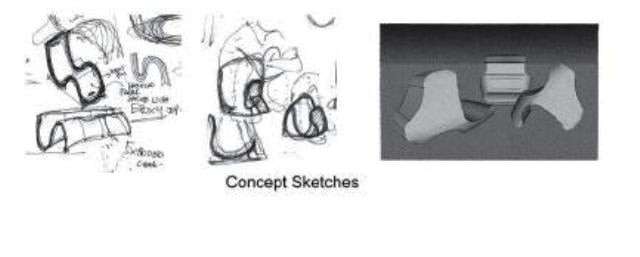Imitation versus inspiration: In addition to debate on 21 chairs, 3 designers speak up
Exhibition raises issues whether designs were plagiarized.

This is in response to the article published in The Express Tribune newspaper on April 17 titled, “At top art school, debate on imitation versus inspiration rages after teachers exhibit work”.
There has been a lot of controversy that has shrouded the 21 Chairs exhibit held at Indus Valley School of Art & Architecture earlier this month, organized by the IAP [Institute of Architects of Pakistan]. The aftermath of the exhibition has raised concerns on various levels, the least of which now seems to be the issue of whether or not these works (the six chairs named in the article) were indeed plagiarized. What is of more pressing concern perhaps is the nature of the response that the works elicited, the platform on which the debate was carried out, the allegations that were hurled unabashedly (though surreptitiously), and the lack of genuine inquiry that was conducted before such claims were publicly aired …
… [T]he questions of relevance that have been brought to the forefront as a fall out of this debate are ones of authenticity and the creative process. In order to address, and in the hope to propel, some of the dialogue that has been initiated in architecture circles in academic institutions and within the profession, it is important to express, once again the following:
“Architecture is a Discourse. Context and positioning add relevance to the contributions we make in this field. Absolutely nothing is ever only purely self-referential. To think that anyone can do anything that has never been done before is both naive and uniformed. Ideas, good ones as well as bad ones, have been thought before. Original Thought is as rare as Original Sin. We learn from and are conditioned by History, it affects us in how we view and interact with the world. Anyone who has been to any school of design and architecture knows the emphasis put on precedents, and history/theory. This is not to say that ours or any of the other designs were “copied” from the internet or anything of that sort, but more that anything one does or makes has most likely been attempted somewhere by someone at sometime. That there is a resemblance is not altogether surprising, but to assume that it was based on an image we had seen and then replicated is presumptuous…”
As one of the design teams that were named in the notorious six, we would like to take this opportunity to share the origins of our design. “Challo!” was conceived as a chair that would accommodate a posture common to many Asian cultures, the squat. It came about through observation and the identification of a social behavioral pattern, one that had not been addressed and is relevant when examining an apparatus of sitting in our habitat.
We attempted the evolution of a vernacular type, starting with one “native” posture and morphing into quite another. By simple rotation of the chair itself, other sitting positions are revealed. The chair’s sculptural form dissuaded an immediate reading of it, allowing for the discovery of new stances with usage. Challo! underwent various iterations of design, as documented below; a planar edition, a cube-like form, and finally a more organic version.
The chair that Challo! has been compared to as a “close copy” in the article is one designed by European designer Marco Hemmerling. …[W]e shared with him the newspaper write-ups as well as images and concept of our design. The following is his response dated April 19: “I think it’s no problem since the chairs - even though there are similar aspects - have their own identity and design language as well as individual features that make them unique.”
Whatever conclusions one draws from any of what we have said thus far, it is perhaps safe to say the world has become and increasingly small place, shrinking exponentially with tremendous velocity. … With this there has been a blurring of boundaries, leaving us with an inability to draw concrete lines defining the parameters of our thoughts, and of ourselves. One could see this is a regrettable state, where individuality and originality fall by the wayside. … There ought to be more collaboration, more interaction, more exchange of ideas, more evolution and invention. And frankly, there ought to be more debate.
However it unfolded, and whatever unpleasantness occurred, the fact that these issues are being discussed at all is a giant step forward. We would like to commend the IAP for putting together this exercise, Indus Valley for hosting it, the designers for investing their thought energy and time into making it a show worth remembering, and The Express Tribune for covering it and the ensuing debate that followed.
Editor’s note: There was no malicious intent to the story and we regret that it has come across as such. This rebuttal has been slightly edited for space.
Published in The Express Tribune, April 29th, 2011.



















COMMENTS
Comments are moderated and generally will be posted if they are on-topic and not abusive.
For more information, please see our Comments FAQ